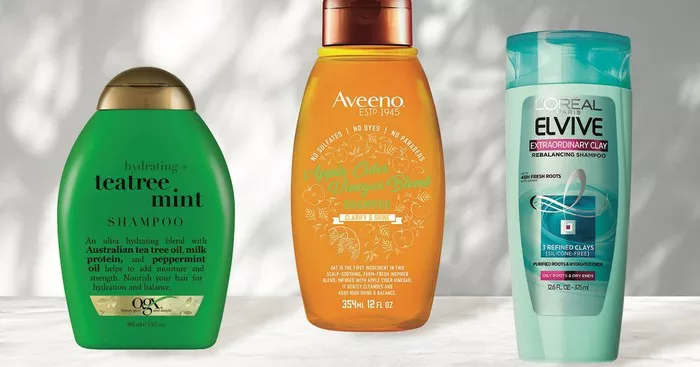In the vast and ever-evolving landscape of hair care products, navigating the shelves can be a daunting task. With an array of shampoos, conditioners, serums, oils, and treatments promising miraculous results, consumers are often left wondering: What hair care products should I use? This question goes beyond mere cosmetic concerns; it delves into the realms of health, personal expression, and self-confidence. To demystify this crucial aspect of personal grooming, let’s explore the factors influencing product selection, decipher common ingredients, and unveil strategies for crafting a personalized hair care routine that aligns with individual needs and preferences.
Understanding Hair Types and Needs
The journey to finding the right hair care products begins with understanding your hair type and its unique needs. Hair types can vary significantly based on factors such as texture, density, porosity, and scalp condition. Common hair types include straight, wavy, curly, and coily, each presenting distinct characteristics and challenges.
Straight hair tends to be oilier at the scalp and may require lightweight, clarifying products to prevent buildup. Wavy hair often benefits from hydrating formulas that enhance natural waves and minimize frizz. Curly and coily hair types crave moisture to maintain shape and definition, making rich, nourishing products essential.
Additionally, factors like color-treated or chemically processed hair necessitate specialized care to preserve vibrancy and integrity. Individuals with sensitive scalps may need gentle, fragrance-free options to avoid irritation.
Deciphering Product Labels: Key Ingredients and Formulations
To make informed choices, it’s essential to decode product labels and understand the role of key ingredients. While formulations may vary, certain ingredients offer targeted benefits for specific hair concerns.
1. Cleansing Agents: Look for sulfate-free shampoos to avoid stripping natural oils, particularly for dry or color-treated hair. Ingredients like sodium lauryl sulfate (SLS) can be harsh and drying, while gentler alternatives like sulfosuccinates or coco-glucoside offer effective cleansing without causing excessive dryness.
2. Moisturizing Agents: Hydrating ingredients such as glycerin, panthenol (provitamin B5), and hyaluronic acid help replenish moisture and improve elasticity, promoting softness and manageability.
3. Proteins: Protein-based ingredients like keratin, collagen, and silk amino acids strengthen hair shafts, reduce breakage, and enhance resilience, making them beneficial for damaged or weakened hair.
4. Oils and Extracts: Natural oils such as argan, coconut, jojoba, and avocado deliver nourishment and hydration, while botanical extracts like aloe vera, chamomile, and green tea offer antioxidant properties and soothe the scalp.
5. Silicones: While silicones can impart smoothness and shine, they may also cause buildup over time, leading to dullness and weighing down the hair. Opt for water-soluble silicones or limit their use if prone to product buildup.
6. Fragrances and Allergens: Be mindful of synthetic fragrances and potential allergens like parabens, phthalates, and formaldehyde-releasing preservatives, especially if you have sensitivities or allergies.
Understanding how these ingredients interact with your hair type and addressing specific concerns can guide product selection and optimize results.
Crafting a Personalized Hair Care Routine
A tailored hair care routine takes into account individual preferences, lifestyle factors, and desired outcomes. Consider the following steps when curating your regimen:
1. Assess Your Hair Needs: Identify your primary hair concerns, whether it’s dryness, frizz, damage, or scalp issues. This evaluation will guide your product choices and treatment options.
2. Choose the Right Products: Select cleansers, conditioners, and styling products formulated for your hair type and concerns. Experiment with different brands and formulations to find what works best for you.
3. Establish a Cleansing Schedule: Determine how often you need to wash your hair based on scalp oiliness, activity level, and styling preferences. Avoid overwashing, as it can strip natural oils and disrupt the scalp’s moisture balance.
4. Incorporate Treatments: Integrate treatments such as masks, oils, or serums into your routine to address specific concerns like hydration, repair, or scalp health. These intensive treatments can be used weekly or as needed for an extra boost of nourishment.
5. Practice Gentle Styling: Minimize heat styling and use heat protectants when applying heat tools to prevent damage. Embrace protective styles like braids or buns to reduce manipulation and promote hair health.
6. Prioritize Scalp Care: Pay attention to scalp health by using gentle exfoliants or scalp treatments to remove buildup and promote circulation. A healthy scalp provides the foundation for strong, beautiful hair.
7. Monitor Results and Adjust: Assess the effectiveness of your routine over time and make adjustments as needed. Hair care needs may evolve with seasonal changes, hormonal fluctuations, or lifestyle shifts, so remain adaptable in your approach.
Conclusion
Selecting the right hair care products is not a one-size-fits-all endeavor but rather a personalized journey guided by knowledge, experimentation, and self-awareness. By understanding your hair type, deciphering product labels, and crafting a customized routine, you can unlock the secrets to healthy, beautiful hair that reflects your unique style and identity. Empowered with this knowledge, embark on your hair care journey with confidence, knowing that the perfect products for your hair are within reach.


